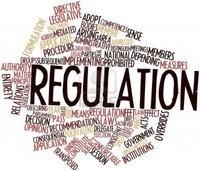The Sustaining Generic Medicines Markets in Europe report (April 2006), produced by the Research Centre for Pharmaceutical Care and Pharmaco-economics and authored by Professor Steven Simoens and Ms Sandra De Coster, offers a country-by-country analysis of generics markets in Europe and discusses factors both hindering and aiding the development of generics markets.
As the authors write, “the development of a generic medicines market needs to be actively sustained by a generic medicines policy.” Despite this advice, a thread that seemed to run in common amongst the countries studied in the report was the presence of systems that were not financially conducive for pharmacists to prescribe generics. This thus represents an area that ought to receive attention and correction in any country desiring to implement policy that is favourable to the development of a strong generics market.
Policies that promote use of generics are shown in the table.
Table: Strengths and weaknesses of policies that affect generics usage
| Type of policy
|
Strengths
|
Weaknesses
|
| Market entry
|
| Pricing and reimbursement approval process
|
Mechanism to check justification for price and reimbursement status.
|
Delays market entry of generic medicines and prevents level playing field across countries.
|
| Pricing
|
| Free pricing of medicines
|
High medicine prices create attractive conditions for market entry by generic medicines. Large price differences between originator and generic medicines stimulate patient demand for generic medicines.
|
Strong price competition could endanger the long-term suitability of the generic medicines industry.
|
| Pricing regulation
|
Mechanism to contain public pharmaceutical expenditure.
|
Lower medicine prices discourage market entry of generic medicines. Smaller price differences between originator and generic medicines restrict patient demand for generic medicines.
|
| Reference pricing
|
| Reference-pricing system (RPS)
|
Financial incentive for patients to demand generic medicines priced below reference price.
|
Does not stimulate generic medicines use if originator medicines reduce their price below level of reference price.
|
| Low reference price
|
Establishes clear price differential between originator and generic medicines.
|
Forces companies to price generic medicines close to marginal costs and threatens economic viability.
|
| High reference price
|
Facilitates market entry of generic medicines.
|
Small price difference between originator and generic medicines restricts patient demand for generic medicines.
|
| Narrow reference groups
|
Homogenous groups of medicines
|
Reallocation of demand between groups or between group and patented medicines not covered by RPS
|
| Broad reference groups
|
Stimulates competition among medicines that target the same illness. Reduces potential for reallocation of demand.
|
Heterogeneous groups of medicines with potential of prescription of less effective medicine in order to avoid co-payment.
|
| Incentive for physicians
|
| Budgets
|
Increases generic prescription rates.
|
Only effective in combination with sanctions for budget overruns. May encourage referral or admission to hospital.
|
| INN prescribing
|
Creates potential for delivery of generic medicines by pharmacists.
|
Depends on attitude of physicians, dispensing regulation, and remuneration of pharmacists.
|
| Non-financial incentives
|
Tools that support low-cost prescribing by physicians.
|
Voluntary nature of schemes with unproven effect on generic prescription rates.
|
| Incentive for pharmacists
|
| Absolute pharmacist margins on medicines
|
Pharmacists gain some margin on originator and generic medicines.
|
Increases price of generic medicines relative to originator medicines.
|
| Incentive for patients
|
| Patient co-payment
|
Higher co-payment on originator medicines stimulates demand for generic medicines.
|
Stimulus weakened if physicians are not cost-conscious or co-payment covered by additional insurance.
|
| Information campaign
|
Increased patient awareness of and demand for generic medicines.
|
Small effect if campaign is short-lived and has limited exposure.
|
Taken from the Sustaining Generic Medicines Markets in Europe report (April 2006).
Related articles
Savings from generic medicines use
Recommendations to strengthen generic medicines markets
Recommendations for developing generic medicines markets
Strengths and weaknesses of developing generic medicines markets
Recommendations for mature generic medicines markets
Strengths and weaknesses of developing mature medicines markets
Overview of the Sustaining Generic Medicines Markets in Europe
Reference
Simoens S, De Coster S. Sustaining Generic Medicines Markets in Europe. April 2006.








 0
0











Post your comment